La Muñeca Negra: An Oral History of Margarita Montalvo and Maritza Arango Montalvo
This article went through a peer review process with all identities visible to editors, reviewers and authors.

This story includes excerpts from an oral history of La Muñeca Negra’s director Margarita Montalvo and coordinator Maritza Arango Montalvo. It was recorded in 2023 at the home and studio of Margarita Montalvo in Marianao, Havana, Cuba. The interview was led by oral historian, Yolanda Hester, but was a conversation and collaboration between the Contours team, who listened, engaged, and asked questions. (Lili Sojos, Devon Severson, Carly Duran, Cindy García and Elizabeth Scott). The interview would not have been possible without the translation and interpretation of Lili Sojos, Devon Severson, Carly Duran, and Cindy García. The interview was recorded in both Spanish and English with translations and interpretations conducted in real-time primarily by Lili Sojos and Devon Severson. The transcribing process entailed multiple translations between Spanish and English with the final Spanish translation conducted by Angela Castro, Contours Spanish Copy Editor, and approved by the interviewees.
Proyecto La Muñeca Negra was founded in 1980 to forward community service, social responsibility, and economic mobility, especially for women, through doll making, art, and environmental consciousness. It was founded by sculptor and artist, Margarita Montalvo. Maritza Arango Montalvo, her niece, is the project’s coordinator.
Part 1 | Becoming a Creator
Yolanda Hester: Can you tell us how you became an artist?
Margarita Montalvo: I was born in Havana in the 40s. My first art-making was in preschool. There was a contest for José Martí, and I drew Martí’s house, and they awarded me for that. From then on, I started drawing. I really liked to capture in drawing what I saw.
In fact, I have been drawing since I was a little girl, and in 1962, I was accepted to Escuela de Artes Plasticas (Academia Nacional de Bellas Artes San Alejandro)1https://en.wikipedia.org/wiki/Academia_Nacional_de_Bellas_Artes_San_Alejandro. I knew of Artes already, but I hadn’t been able to enter, and that year, I entered that school, and I started. In my first year, I had very good teachers, and I started working.
I was very inclined towards drawing and sculpture. I started to grow. Then, I had to leave school after two years, because my mom was taking care of my baby, and she couldn’t continue, so I had to leave school.
In 1967, I went back to school and graduated in 1971, and from there, I started to work and make my artistic life as a creator and as a teacher, creating, making my pieces, and teaching. I began teaching art at the teacher’s training school.
In 1974, I won three awards, for three of my sculptures. First, I was awarded for my sculpture called Butterfly.
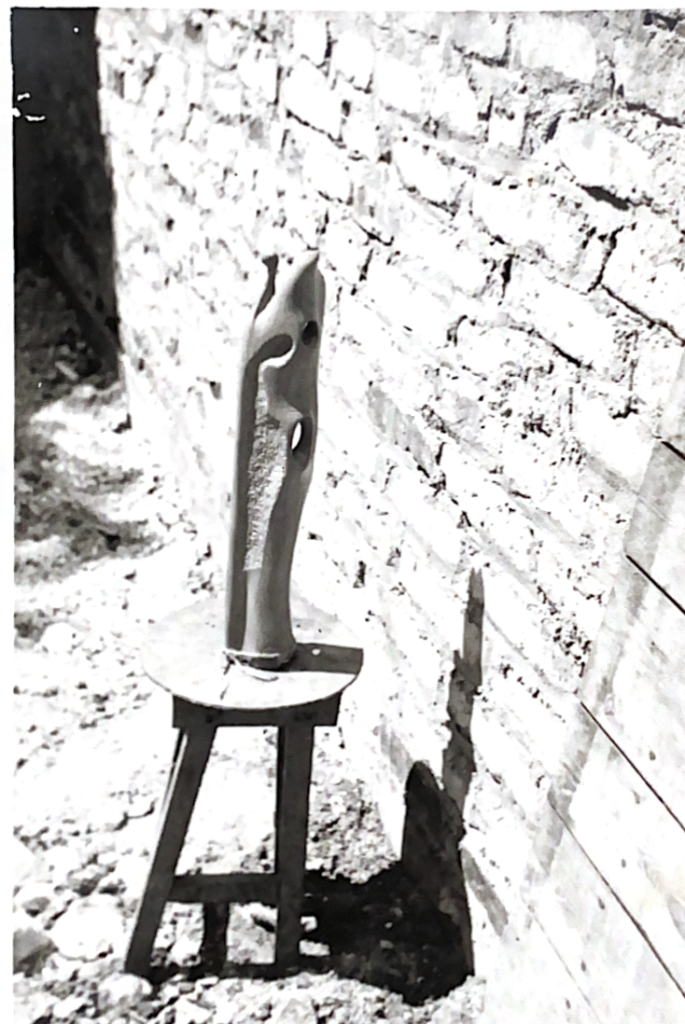
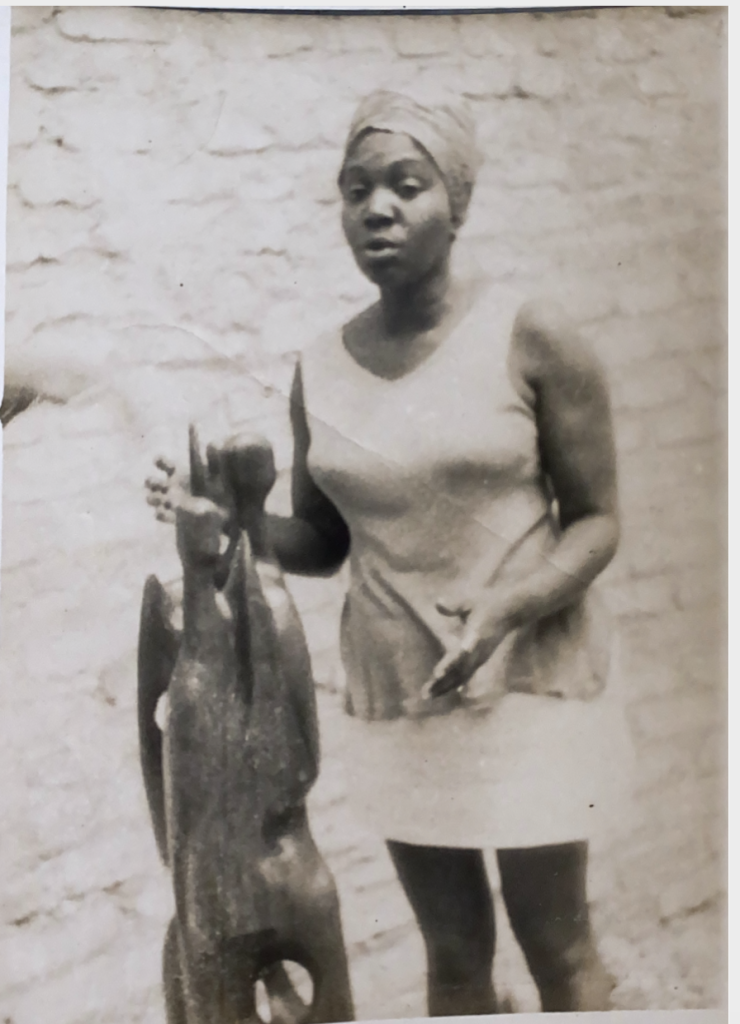
The following year, I won first, second, and third-place awards. That time I won all the prizes. Then, I did my first personal show at a medical retreat on 23rd Street in El Vedado. It was very successful. There were a lot of people, and they liked it.
I produced a lot of sculptures and participated in many exhibitions. I am included in Esculturas en Cuba, Siglo XX (Cuban Sculptors of the 20th Century) (Jose Vegas, 2011)2https://www.bellasartes.co.cu/publicacion/escultura-en-cuba-siglo-xx among those sculptors, because I participated in so many sculpture shows.
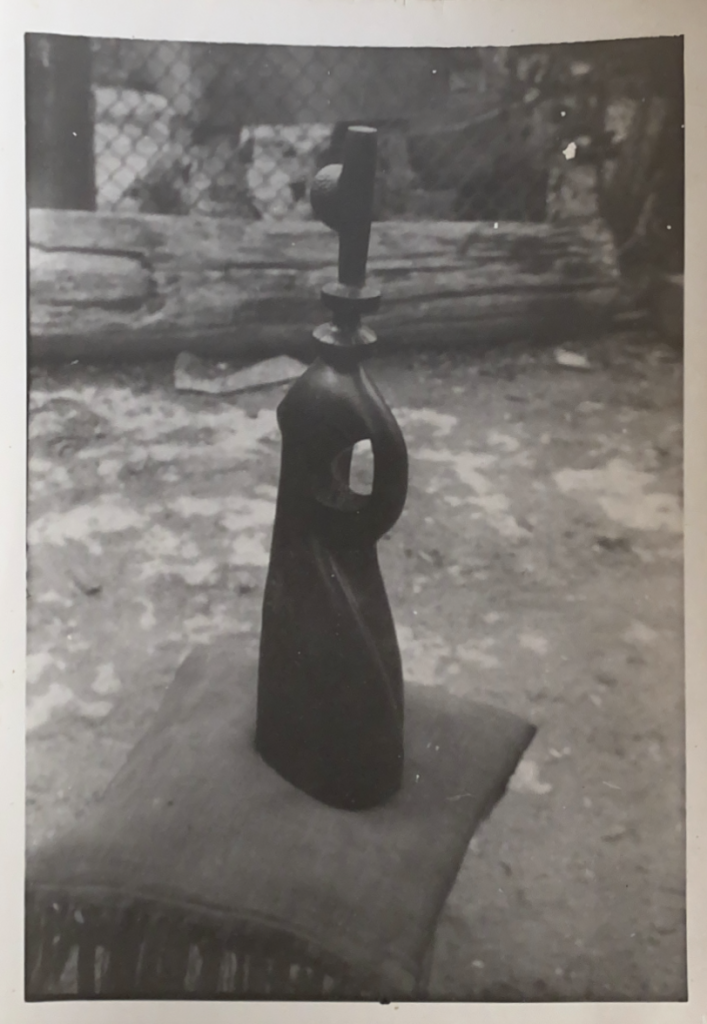
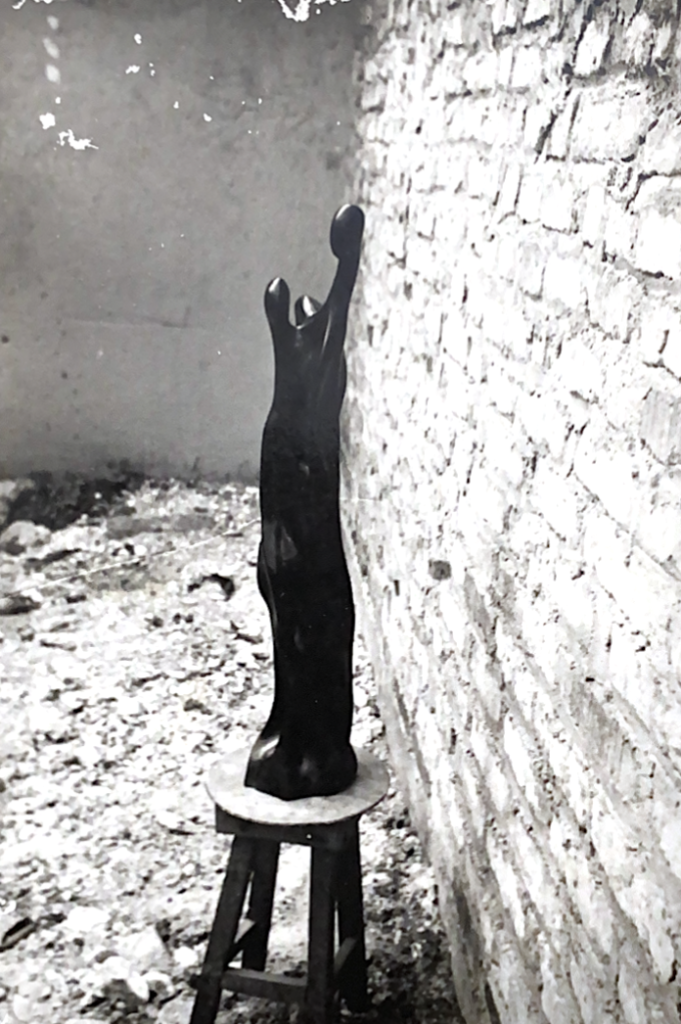
When I was in art school, we studied everything, world history, from the Greeks, and Egyptians, everything, everything, universally everything. We had to learn everything, and then they had us study Cuba, which covered all art history and appreciation of plastic arts from the beginning. We started from prehistory. All of that, paleolithic, neolithic, we had to learn all of that.
I feel that I developed as a person as time went on, especially during the revolution, I was 17 years old when the revolution started, and that was a completely different time in the way that I identified myself. I had a child and I had to grow up, in a sense. I had to raise and take care of my son, so I saw myself change completely over time.
Growing up, I was a girl “de la casa” and not in the streets. My parents were always concerned that we were a group of girls who were respected because girls who did not study or did not have a good education simply did not have a chance. And always because we were black girls, we had to be very honest, we had to be within the rules, as the older people used to say before, “We have to behave correctly to be accepted.” My parents were always very worried about that.
That was how it was, being a girl “de la casa”, being respectable girls, that we studied, that we were not on the street. If we were going to go to a party, we simply had to go with an older person, or with one of the boys who were older than us and who would take care of us. They would bring us to the party, and then they would take us home.
That was life before the revolution.
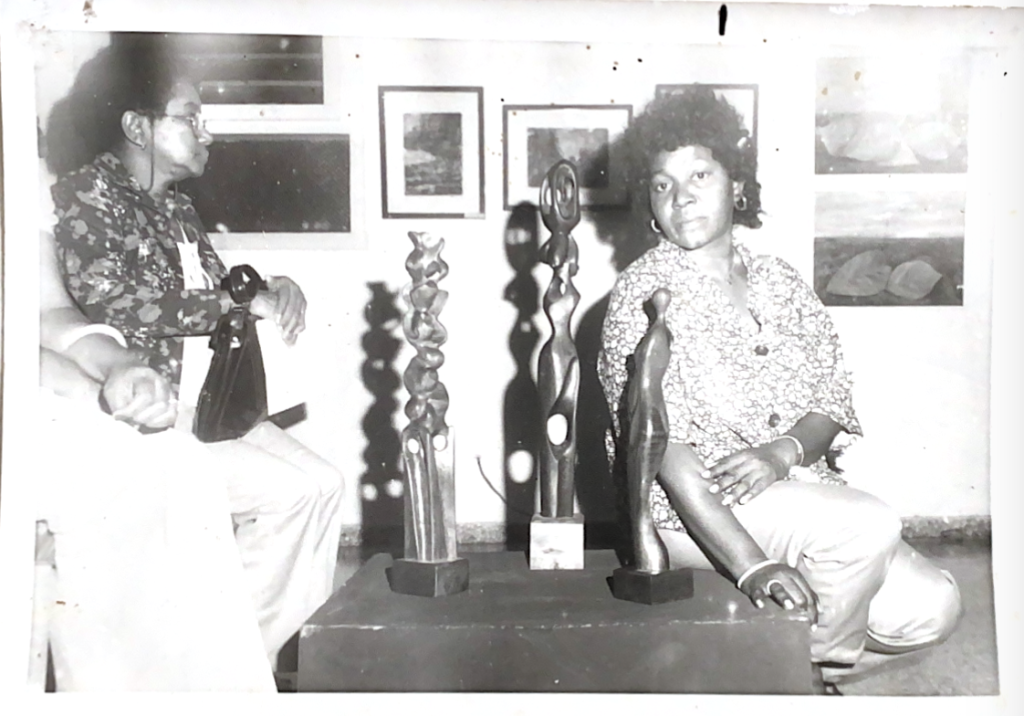
My first studies (preschool) were in a public school, my sister, who was older than me, was already at the OBLATAS Sisters school (a private school), because my dad worked in the home of a wealthy family who financially supported the school. Upon finding out that my dad had a daughter of school age, they told him that they would be responsible for paying for the school, if it was private. In that school there were white and black boys and girls and even 2 Chinese girls.
My mother was going to pick up my sister with me from the Oblatas school and Mother Josefita asks her why I was not at school, to which my mother explains that it was due to lack of money and then Mother Josefita tells her that I thought she would take care of my education, and that’s how I got into that school.
Yolanda Hester: If that was you before the revolution, tell me about who you were after the revolution. How did you change?
Margarita Montalvo: There was a change because after I finished studying, I was able to go to Escuela de San Alejandro, an art school, after the revolution. It was opened to black students. Ten years after the revolution, I was able to enter the school. The changes of the revolution were beginning to be visible.
Yolanda Hester: And you Maritza, how did you find yourself on this path?
Maritza Arango: I was born in Havana in the 60s. I was always a very calm girl, nothing and still.
A very calm girl, also very much at home. I wasn’t much into games either, since I spent a lot of time alone with my mother. When I entered school I started to socialize more. I went to parties and made many friends, I completed my primary, secondary and pre-university studies in a school called Ciudad Escolar Libertad, finishing these studies I did a degree in Intermediate Technique in Stomatology (oral medicine). The change began when I entered the La Muñeca Negra Project.
The first change was caused by pregnancy and then the responsibility of a girl in my care. After having my daughter, the responsibility I had was greater and then my young life began to transform, and to mature in everything that life puts in front of you with children.
I was always related to the project since I was little, I would see my aunt. But one day my aunt, Margarita, gave me a very serious call. She needed me to get involved and be the coordinator of the project. I already did crafts, seeing those older adult women work and do it. Well, it was a challenge for me, and I learned to do many things, my transformation began, I went through many craft workshops to perfect my work, workshops on equity, gender, self-esteem and many more, to be able to become this woman who I am today, autonomous and independent, entrepreneurial and empowered.
I started off helping out with the dolls, but also making jewelry out of seeds and beads and wire that I would find where I used to work. And I also began making purses, and I made tapestries, fans, earrings, and scarves, many different things.
In 2015, in an awareness workshop at the Marianao Neighborhood Comprehensive Transformation Workshop, my aunt and I were asked if we could take charge of a shoe store. We said, “yes.” It was a participatory study with a gendered approach focused on violated and vulnerable women. Creating a business in a non-traditional profession for women was another challenge.
We didn’t know anything at all about shoe stores, we learned along the way, knowledgeable people who I approached and they taught me and by searching on Google. By having the shoe store, we also became active members of the El Movimiento de Mujeres en Espiral, which at that times was called Mujeres del Desarrollo Local de Marianao, which supports economic initiatives and community projects for women, only. In El Movimiento de Mujeres en Espiral there are initiatives such as baking, sewing, crafts, hairdressing and manicure, shoemaking, sweets and food preparation. It is no longer just for violated women trying to escape all types of violence but has become a space for reflection, of personal and collective growth, how to be empowered socially, politically and economically, for any woman who would like to be part of the process.

Devon Severson: You mentioned that these workshops focus on women who have experienced some sort of violence in their lives, what does economic empowerment mean for women who have experienced violence or who are currently experiencing violence?
Maritza Arango: Well, we have several women who have experienced a lot of violence, mistreated in many ways, physically and psychologically, discriminated against due to skin color, age, sexual preference, etc. But for these women, economic empowerment is also freedom.
It is freedom because it has guided them along a path to eliminate that violence, to learn and unlearn, and above all to know how to visualize a new path, to realize that they can be autonomous and independent, something you must be aware of to achieve change. These women are nothing like the women they were in 2014 and 2015 (during the violence).
Not at all.
However, Las Mujeres de Desarrollo Local was an integrated group, not all of the women were mistreated.
But our gender-focused, participatory approach meant that we came together to share knowledge, to talk about the past, because it’s always good to listen to each other because it helps.
I ran workshops on economic feasibility, popular and solidarity economy so that women who worked on economic initiatives and started their own businesses, no matter how small, could learn to manage them without losses. Something of vital importance.
What happens is that sometimes women are the owners of the business, but the man is the one who ends up directing it and giving the last word, being the face of the business.
The patriarchy is almost always imposed, and the patriarchy in Cuba is still very well-marked.
A very subtle way that men take over the business of their wives is by saying that they are going to help her, and that they are going to collaborate. “I’ll take care of the economy, you take care of the shopping.” And with taking care of the economy, he practically becomes the owner of the business.
Machismo, patriarchy, is very common here, still very strong, much has been achieved in terms of the well-being and rights of women and girls, but it is still very deep-rooted
That is why the workshops were started so that we can teach women how to be able to manage their own money so they don’t lose it all, so they can have their own knowledge as to how to manage their businesses.
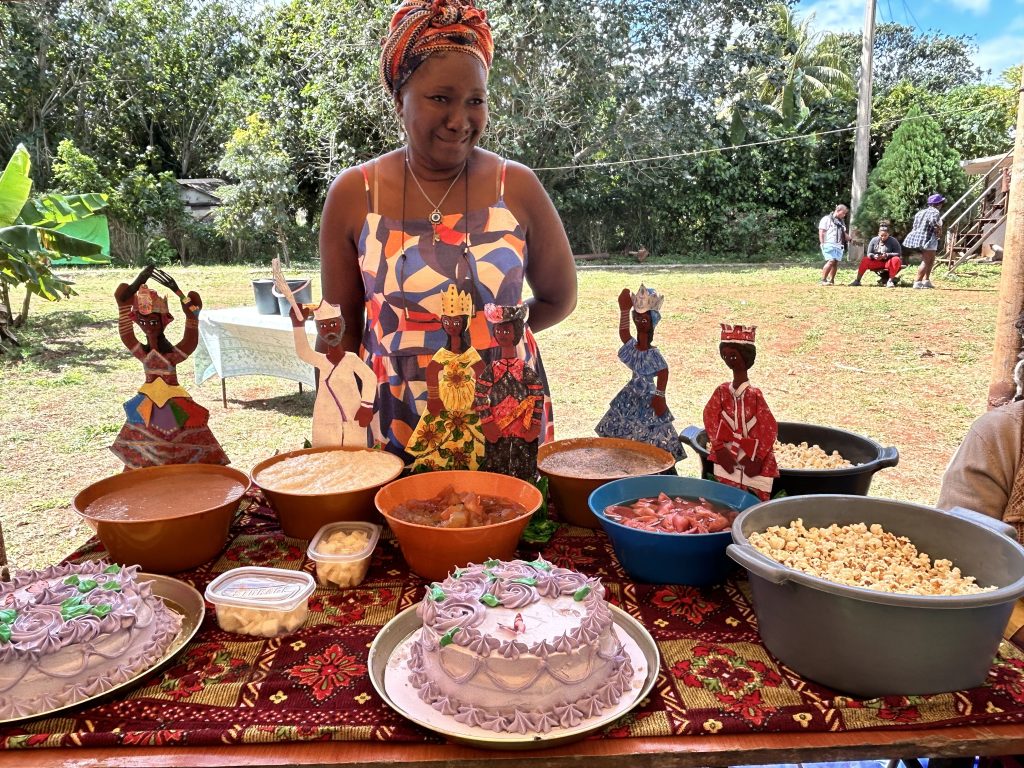
Yolanda Hester: You started a shoe company and you didn’t know how to make shoes or that wasn’t your main practice but you started the business and figured it out, tell me how you learned to make shoes.
Maritza Arango: I really didn’t know how to make shoes but I also didn’t deny myself of the opportunity of having the shoe shop. When we first took over the business there were materials and these small, already made sandals. We donated those to an orphanage.
I learned basic shoe-making from people in the community. I said, well, if I know how to sew I can make my molds. I got on YouTube, on Google, and I started to see how I could make the mold of the shoe. I spent a lot on material early on because the first ones didn’t turn out well but I learned to make sandals.
Cindy García: So, do you have a name for your company?
Maritza Arango: Well, the business I want to promote is a Mipymes, a small business, a new strategy for economic actors in the country. I would like to have a space where I can market all those products that we make in the shoe store that is no longer just sandals, also belts, wallets, mobile phone cases, etc. I have to include the products of the project because our shoe store is within the La Muñeca space Negra. By the way, the shoe store is called La Oportuna.
It is a way to be able to market our products, and within El Movimiento de Mujeres en Espiral movement.
PART II | Black Dolls in Cuba
Yolanda Hester: Tell me about when you got your first doll. What was it like? What did it look like?
Margarita Montalvo: My first doll was given to me by a friend of my mother. She gave me a very pretty doll that was white but had a complexion that was a little more golden, her eyes were blue. I combed her hair, I loved combing her hair. I combed her a lot until I left her almost hairless, but I still loved the doll and I still keep her with me.
That is precisely why I started making dolls. I once had to work at the La Casa de Cultura3https://cuba50.org/2021/10/19/casas-de-cultura-in-cuba-empowering-communities-to-access-consume-and-create-culture/ to make a doll and one of the girls I was working with said she didn’t want to make dolls the way I was making them. She wanted to make them out of fabric and that’s how I started making the dolls that I make today.
Yolanda Hester: How old were you when she got the first doll?
Margarita Montalvo: When I got that first doll, I was seven years old.
Yolanda Hester: And Maritza?
Maritza Arango: Yes, I had a doll called Loretta. I remember that doll, I don’t remember any other. It was a white doll. It was a doll that the government gave me. Toys were restricted. Our parents had the right to buy toys once a year, and then the government gave each child a coupon for three different toys: a básico, a no-básico, and a dirigido. The básico was the principal toy, the most expensive one, like a doll or a bicycle. The no-básico was a medium-level toy, like a small doll or a ball. The dirigido was very small, like a jump rope or jacks.
And in one of those years, I got the doll, Loretta.
The government gave it to the parents, well, no, the government provided them, the parents bought them.
Margarita Montalvo: There was one significant day of the year that the parents could go and buy them, and that was on January 6th, which was the day of the Three Kings’ Day. Each parent was told where to go and buy them, and given a little card with instructions as to where to buy them.
Maritza Arango: There were so many children on the list, up to a certain age, because the toys were also limited. Each card had the number of children that you had in your libreta or “notebook,” and then you bought them. You had the right to buy them. A libreta is a notebook that shows how much of a product each family is eligible to receive from the government each month, or is eligible to purchase, as in the case of the toys.
It wasn’t credit. It was the right to buy them. If you had money, you bought them toys.
Margarita Montalvo: If you didn’t have money, you simply couldn’t buy toys for your child. Sometimes, if there was a family who did not have the money to buy toys, they could barter, with other families who either didn’t need the toys or who had more privilege or purchasing power and were able to buy the two more expensive toys that you had the right to, so you’d go to that family, and they would give you their basic toy or their card that represented the right to purchase their basic toys so that you could get a basic toy for your child, which was less expensive.
Yolanda Hester: And did everyone, all the children in your community have dolls?
Margarita Montalvo: No, not all the girls around me had dolls. They weren’t actually allowed to have dolls because they didn’t have money. So I was privileged to have that doll because the lady who gave it to me had a decent job and didn’t live near me. And the girls where she worked had dolls, so she took one of them and gave it to me.
Yolanda Hester: And as a kid, you said you had a golden doll, were there dolls of different colors, were there black dolls, or were only golden dolls available?
Margarita Montalvo: The dolls that were available at that time were White. White. We girls never had black dolls. We had never seen black dolls. The black dolls began to be made for money and they were made of fabric.
. . . . I saw my first Black doll many years later. Because the ones who made the black dolls, almost always, of fabric, used them for rituals from the Yoruba religion. They weren’t for the girls to play with.
That’s why people who didn’t understand the Yoruba religion were afraid of black dolls. They never wanted to have black dolls. For the people who were not part of the Yoruba religion, they saw Yoruba as malevolent and tied it to race.
Yolanda Hester: Tell me more about that.
Margarita Montalvo: The black doll they used represented the ancestors. Therefore, black dolls were not seen as a toy, as they were often used for religious purposes, Yoruba practitioners did not see them as something they could play with or simply have. So there was a certain fear and respect for those dolls because they were something religious, magical, or “witchcraft” as they used to say.
Yolanda Hester: And so for the religious dolls, what processes would make them part of the religion? Was it just the making? Were there special ceremonies or rituals?
What were the elements that made these dolls embody the religious practices?
Margarita Montalvo: They were dressed with the attire of the orishas, or the representations. They would dress them in yellow, and they would put sunflowers on them, which are the flowers that represent that orisha. They would dress them in blue to represent Yemanja.
They would put white things on her to represent the foam of the sea. And from there they started to put attributes of each of the orisha, regardless of the fact that they would also put on their Cuban robes, which are the robes that represent Cuba. They would put on their elements that were already implicit here in Cuba.
The Africans, the African tribes, and the Cuban robes here in Cuba, which are the white robes, all embroidered with fur and all that. And another one was the blue, like, would make it like blue dresses. Attributes are elements that represent each one of the orisha. For example, the fan is an attribute of Ochun. The ax is an attribute of Changó.
Maritza Arango: In the question you asked about which part of the doll was used for the ritual, well, it was used completely. That is, the doll or the doll to do a ritual was used completely. The doll was made according to the magic, the ritual, and their purpose, religiously. They used it from head to toe.
But they eventually sold the black doll, not for play, but for tourism, and it was poorly represented. I mean, it was the stereotype of that ugly black woman, with thick lips painted in red, with a big butt, big breasts. I mean, there was no beauty in that woman.
She was a woman with rough features, always representing the ugliest part, one could say, of what the black represented to the white. And so, tourists buy it as a curiosity and to have something different, and it is something new, something new. Big lips painted red. And like just parts of the body that were bigger than the others, just to show how sometimes blackness showed up as a sense of ugliness. And people bought them out of curiosity, not out of religious curiosity, but out of curiosity, because it was different.
Because the religion was very prohibited. Some time ago the representation of the Orishas on dolls stopped being a taboo, people have more knowledge about the religion or come looking for them. Now many are interested in knowing the origin, attributes, and more about religion and there are even more practitioners.
Cuba is a truly religious country, they know that culture. But it wasn’t always like that, they couldn’t always express it or show it. The freedom to express, show, and practice it now has no prohibitions.
There are also tourists who come and are interested in religious objects. But when they started selling them, it wasn’t like that.
There are people, like tourists too, that come and that are actually interested in the religious background in them. But when they first started selling them, that was not the case.
Yolanda Hester: Were those the only Black dolls at the time?
Maritza Arango: Yes. What happens is that they (Afro-Cubans) feared the black religion, the African religion, feared their past, feared the Yoruba, like the Yoruba ancestors and the Yoruba religions that those dolls represented So those black dolls were a representation of many different religious rituals, and they were a representation of their ancestors, of their past, of the African religious past.
They were jazz.
Yolanda Hester: So when you were a child, in your classes at school, did you learn about slavery? Did you learn about the history of enslavement?
Margarita Montalvo: When they gave us history classes, many teachers explained to us how the war had been, how slavery had been, how they had brought the blacks here to the Americas, right? And very solemnly, because in the nun schools, they didn’t give us the classes like they are giving now. Now the children know much more about slavery than in the time I studied.
I have learned many more things from the revolution (Cuban Revolution 1953-59), which was explained to you much more. They explained things very eloquently, that there was a slavery that the Spaniards had brought, they brought Africans here, and they made them slaves. Now we know much more, and the children now know much more about that time.
Yolanda Hester: And how did education change after the Revolution?
Margarita Montalvo: Now they provide it and they are allowed to use more resources that have more information on how history all happened, and now after the Revolution, they are allowed to go deeper into that research, so now they hold workshops- and they hold workshops for many different people to be able to explain and deepen their knowledge about that.
Yolanda Hester: Before the revolution, when you were growing up, were there practices of Afro-African religions?
Margarita Montalvo: Yes, there were religions, of course. When I was born, I saw that in my house, there was that religion, my grandmother practiced it, and my mother also, and I saw those things, but I had a contradiction, since I was in a nun school. The nun schools did not accept that, I had to go there because they were raising me, they were giving me an education, and there was always that contradiction of beliefs between the Catholic and the African, but I had to be there because it was the best place at the time for my education.
Yolanda Hester: Who made the fabric, ritual dolls?
Margarita Montalvo: Well, all the people who needed to make those kinds of dolls, would look for a black fabric, and they would make those dolls. And it was only years later, when tourism became more popular that people would see those dolls and would want one for themselves, so then the doll makers would start making them more often, regardless of what they were doing for the rituals.
They started making them and making them more beautiful than they were before. That’s where it starts, where everyone wants to have a black doll, but like a tourist, right? The curiosity of having that black doll- and why the taboo that they didn’t want to be made?
It was already a curiosity, and that’s where the curiosity started.
Yolanda Hester: When did they start to be used outside of religious practices for Cubans? Not for tourists, but for Cubans.
Margarita Montalvo: When tourism started, they started making the dolls, not like they did before. They started to make them more beautiful, to paint their eyes, to put turbans on them, to make them look African, to put braids on them. All those things appear later, And that’s when we started to sell them here in Cuba more. It made people buy them more, and outside of religious use.
Yolanda Hester: Returning to the religion, you mentioned that right after the revolution, the Afro-Cuban religion was prohibited?
Margarita Montalvo: Yes, after the revolution. When the revolution triumphed, not until the 80s, I think, that’s when religion was approved. That is, religions, both the Christian or the Catholic as well as the Yoruba, that was when it was accepted that you could express your religion. But before that, it was very prohibited, and so there weren’t even any sales (of the dolls).
PART III | La Muñeca Negra
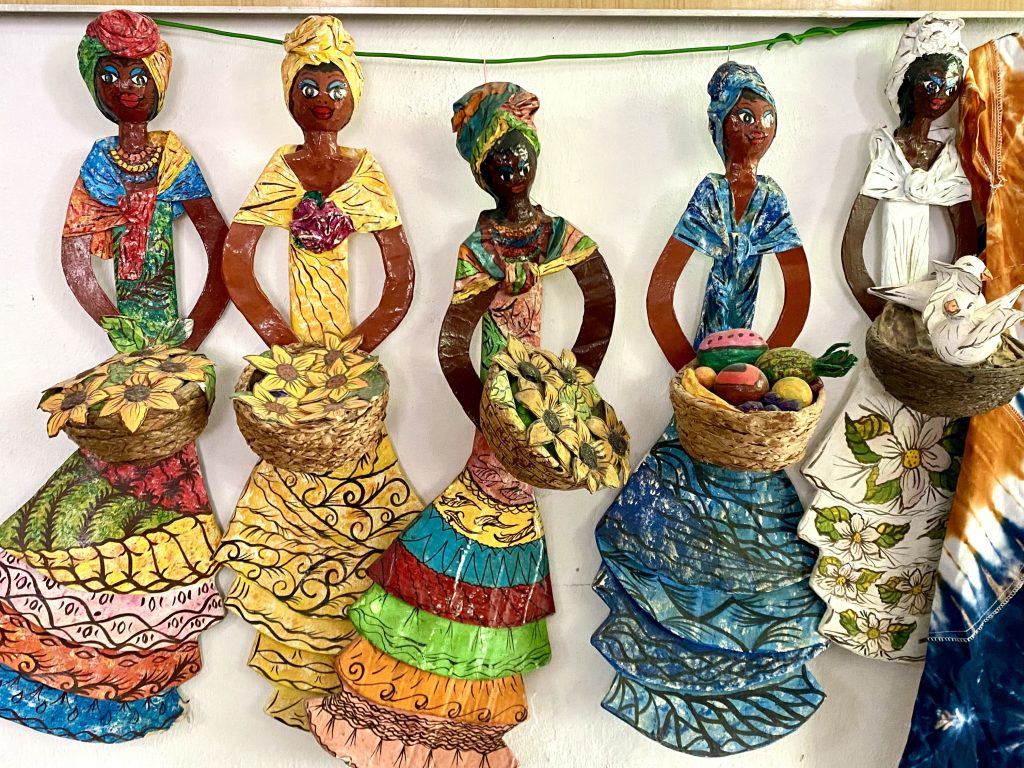
Yolanda Hester: Can you tell us a little bit about how you started here making black dolls?
Maritza Arango: One day my aunt tells me, “Maritza, why don’t you get back to the project and join us for the activities and be here with us?” And from that time in 2014, I came back here (Proyecto La Muneca Negra). All the women worked only for the love of art, for doing things, for learning to make crafts but when we started to interact with the community houses and the workshops and the book fairs – we had a fixed space in the book fair in the children’s pavilion – we saw that the products could be commercialized.
Margarita Montalvo: I started community work when I was a teacher at the Arroyo Arenas Casa de Cultura in La Lisa. I had been working since ’77 as a teacher there in that Casa de Cultura. In 1980 I moved to another Casa de Cultura in a place called San Agustín.
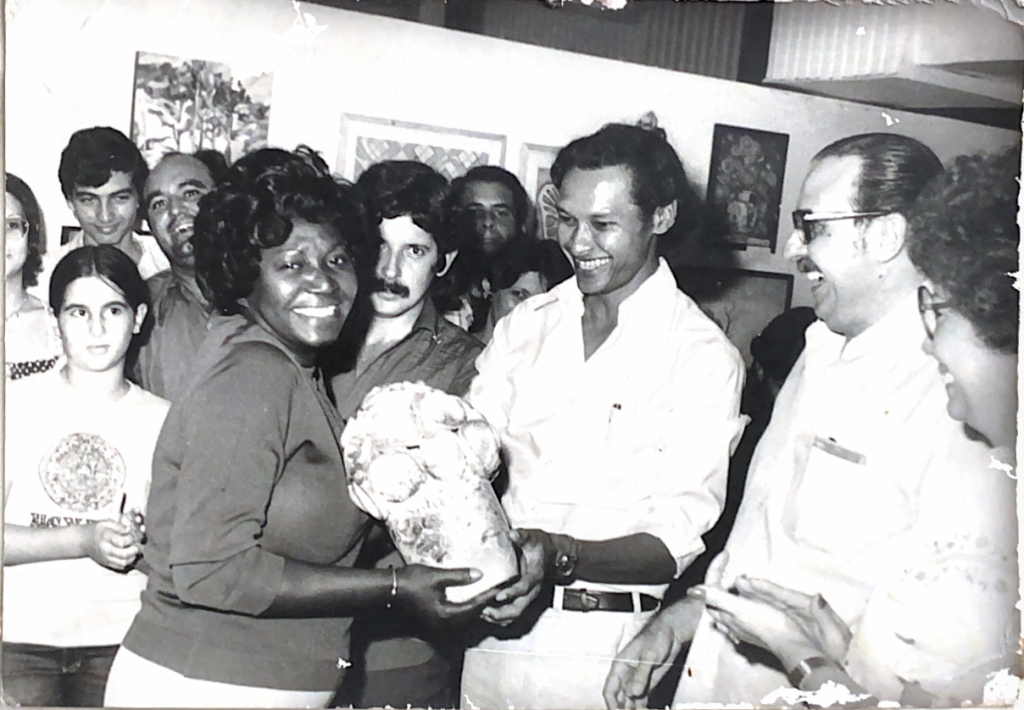
I was there in that Casa de Cultura for 25 years. There were kids from different countries, especially from Chile, because there were many Chileans who had come here because of the coup (1973 Chilean coup d’état). Then one little Chilean girl wanted to make a doll, so I helped her make a doll out of cloth, from a material called yote, which many of us called sackcloth. That doll won an award, and from there, they invited me to teach classes on cloth dolls.
And there was a tradition, called Soporopos4https://www.jstor.org/stable/j.ctt1v2xskk.9?seq=1, Chilean Soporopos. We learned about it from the director of the Casa de Cultura, Carmen Muñoz, who was Chilean. The history behind Soporopos was that it (the doll) was made by a Chilean woman who was incarcerated, she made it with bed sheets, and she would pass them on to people in the cells around her. And then, that Soporopo doll was passed on cell by cell by cell. A Soporopos was gifted to the director, who then gifted it to me. I explored the doll and learned how to make it and now I teach kids how to make it.
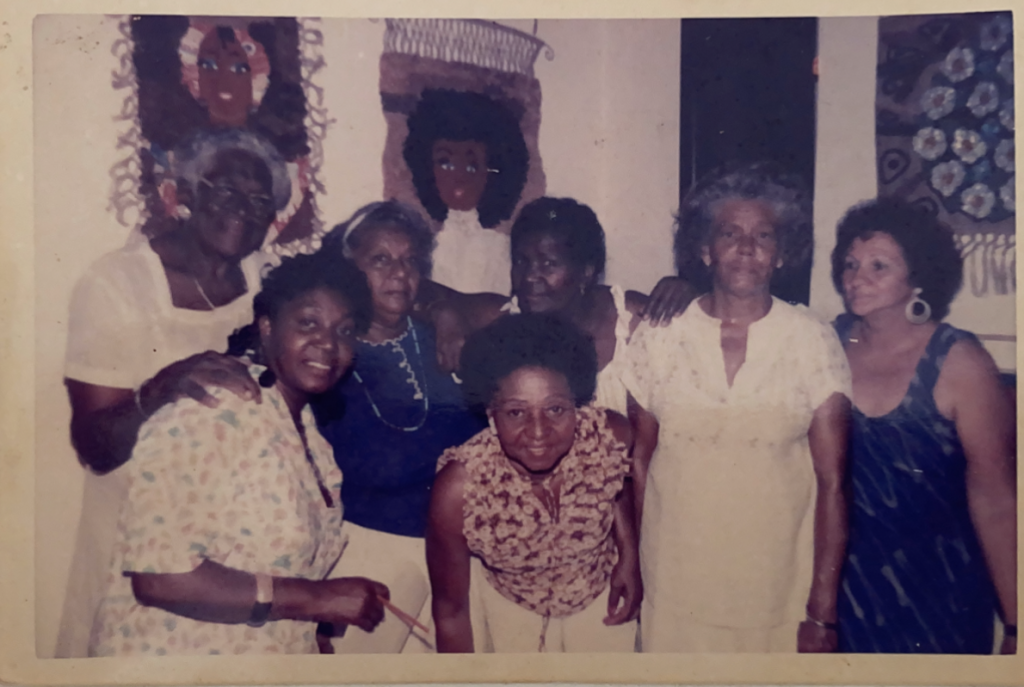
There are many types of Soporopo dolls and different ways they were made. There was one called Sleeping Soporopo, which was a type of doll that could make you sleep. And then there were the Soporopos for girls and boys, and also for adults.
Margarita Montalvo: Well, when this COVID problem started. We had to stop everything. We couldn’t go out, much less the elderly and children, they took great care of us, we had to stop work.
Maritza Arango: I didn’t stop working. I didn’t stop working. I started again here with the grandmothers who wanted to come. It was a sense of bringing the work to my home.
With the children who started here. Plus mine, who have always been here. So I kept working to stay active.
I worked daily with grandmothers. And on Saturdays, with the children, as always. Even on Sundays, I worked with them. We incorporated the paper mache technique that was already done. It started here, and we added other elements.
We started using egg shakers to make the head of the doll. The tubes of paper-maché.
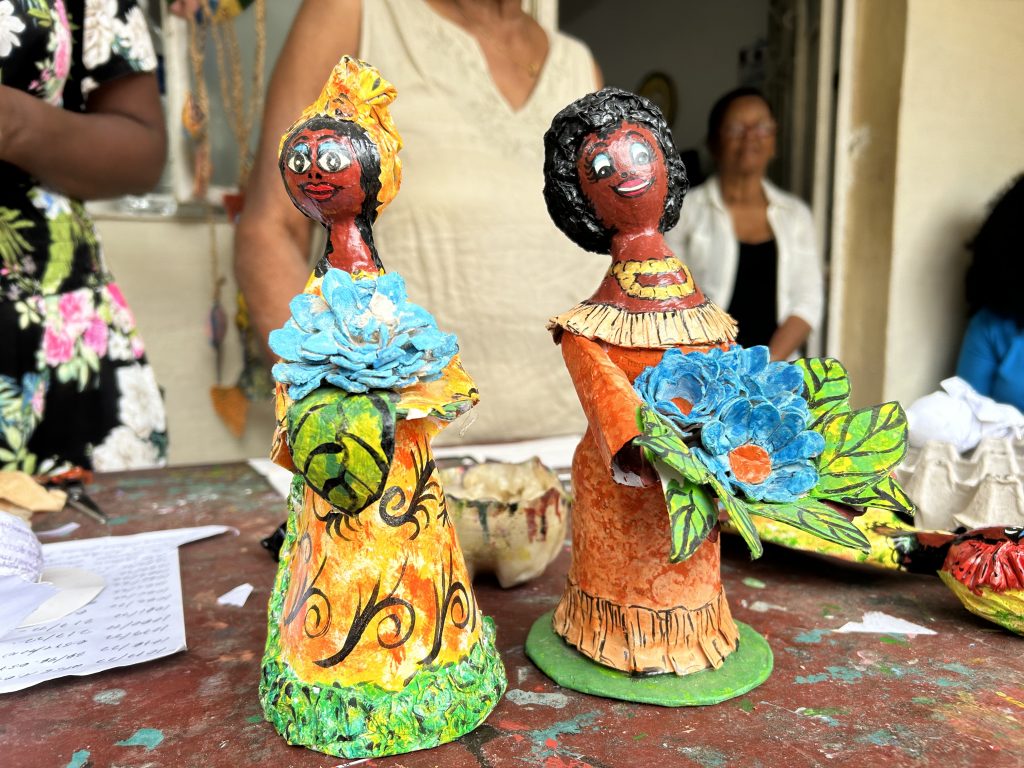
Cindy García: So were you making these muñecas in San Agustín, or did you start here? The dolls are made with ramboyan.
Maritza Arango: We started making them here. Because there was a materials crisis, and we turned to the framboyan pod, it is a large and leafy tree, its fruit- the pod, recycled paper, cardboard, egg shells- the eggs that the neighbors, with tremendous delicacy. . . they make a small opening so we can use it on the doll’s head. A large part of the neighborhood collaborates with us
They start making dolls.
The children start making puppets. The grandmothers and the other girls make the dolls. And the children make their dolls and puppets.
And from there, this multiplication is formed between the Casa-Templo and the La Muñeca Negra project. And each one of those dolls represents something specific. The religion isn’t forced upon or even mentioned in the participation of the doll making. It is something that can be incorporated into it if you want, but it is never part of the participation. We talk about the house, we talk about the family, we talk about anything but religion so that people don’t feel uncomfortable with the religion.
My aunt called the first dolls she made of fabric Panchitas, but there are the Afrofloras who are the flower sellers, the Nanas who have a baby in their arms, and the herbalists who sell herbs.
Yolanda Hester: I know that you do workshops with children and you also do them with women. What are you hoping that children and women- and it could be the same and it could be different- what are you hoping they learn or get from doll making?
Maritza Arango: Well, in children we seek, regardless of their creativity, to develop manual skills, to use their free time doing something useful and creative, and to know that as an ecological project that we are, by working with recyclable material, we clean up the environment, in making puppets. We let them do anything artistic and above all want them to enjoy it. As for women, women do not only come to make dolls, but sometimes they look for workshops on how to make purses, or different types of manual work, we are interested in them integrating and socializing so that they feel a sense of purpose for them and their family. That they have a place where they can focus on themselves, that they do not have to worry for a while, about their homes and chores and that they simply come and focus on themselves and do something that they like, and that they can enjoy it.
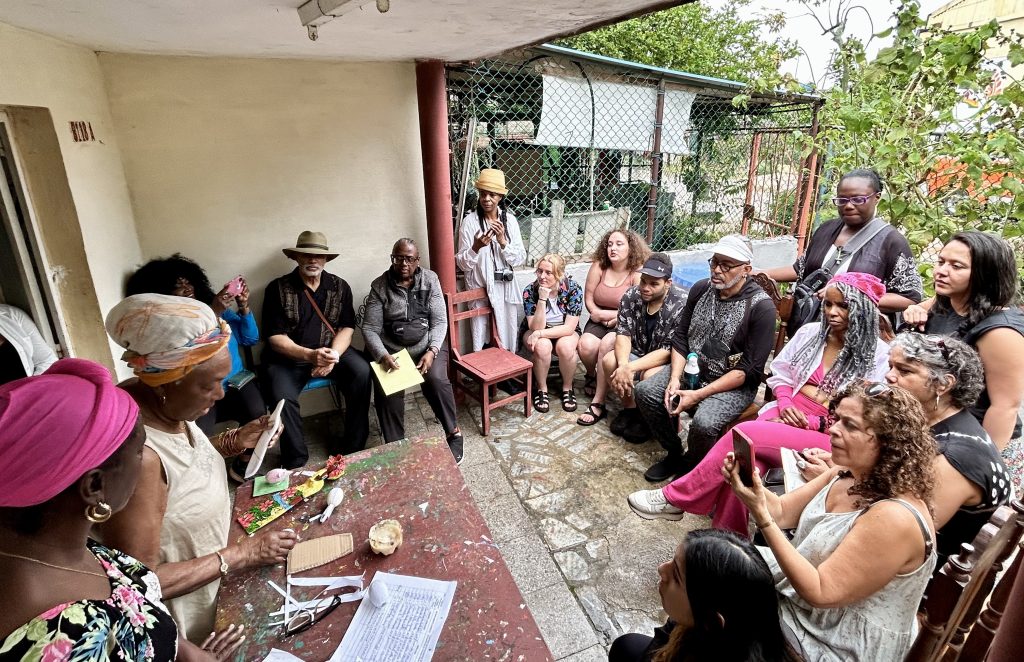
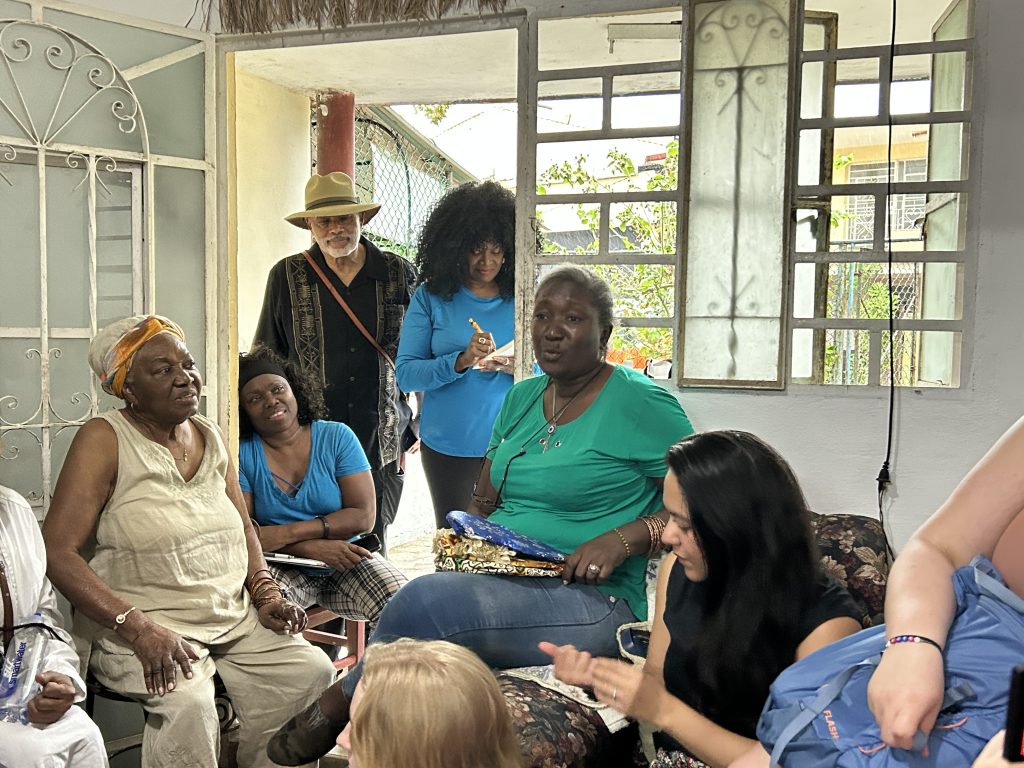
Yolanda Hester: Tell me about, the decision to call, your workshop, La Muñeca Negra.
Margarita Montalvo: La Muñeca Negra, a book by José Martí, appears in the book La Edad de Oro, it is the story of a girl named Piedad and the love she felt for her black doll named Leonor, whom her parents did not want her to have because she was black.
Where the girl highlights human values, above material values and appearances. It is so that boys and girls see it as a toy, just a toy, and it is not the color of the doll that makes the difference.
The absence of black dolls in the hands of our boys and girls, who did not feel identified with a black doll, also makes us every day be more firm in putting it in the hands of any age group, so that they multiply.
Our dolls travel to many places inside and outside the country, and it fills us with satisfaction when they visit us at the workshop and take them with so much affection, sometimes they return for others to give as gifts, because a friend or family member was left with wishes for them.
Yolanda Hester: You make, dolls for children, for people, for your community, but have you ever made a doll, for yourself?
Margarita Montalvo: I haven’t made a single doll for myself, but they are all mine, and every time I give one away, I am giving away a little piece of my life. And I go with each one of them, what I give away, I go with all of them, with every doll I give away, so I myself am traveling the world, with my black dolls, because I am a black doll.
And all my little ones, boys and girls, are all traveling the world, with black dolls, you are black dolls. Black dolls travel the world.
Maritza Arango: No, no. I’ve never made a black doll for myself, but also, I’m traveling the world, and I’m also giving away, some of me, even though I haven’t kept any.
Every time we make one, it’s part of us, and we leave it, we take it, we let them take it, because there it goes with us, there we go, in the filling, in the fabric, in the eye that we paint, or that we embroider, in the button that we put on it, there we go. But it would be good, to make a doll, made by us, for us, because it would also be like a legacy, for the family. Why not?
I had never thought about it.
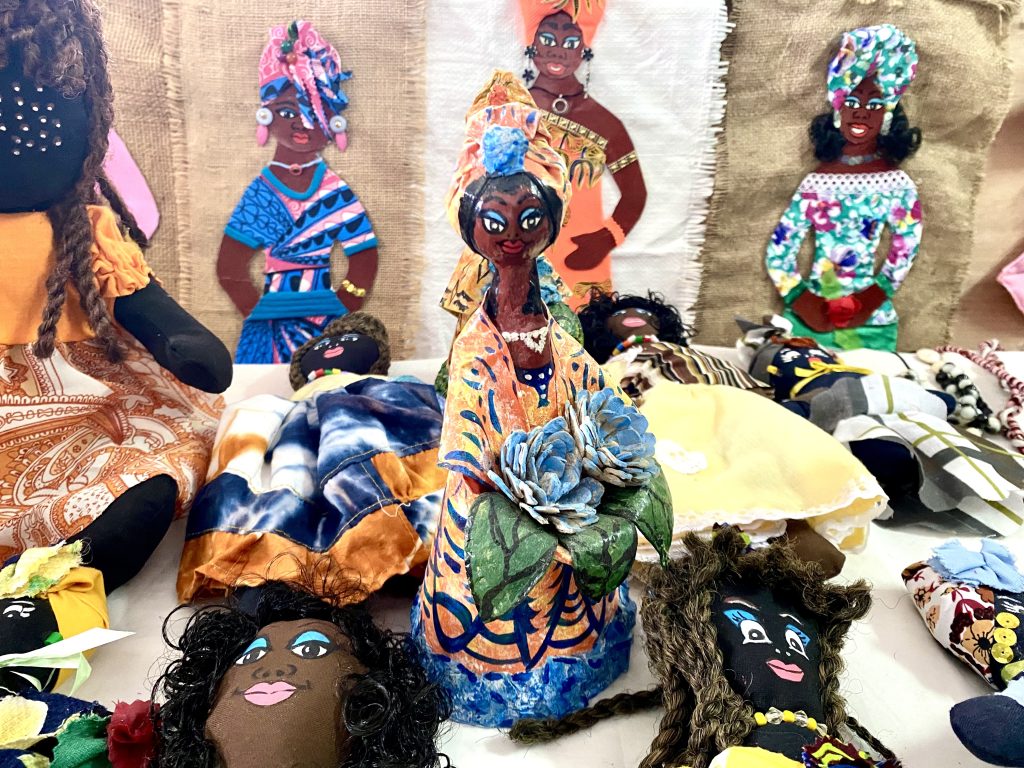
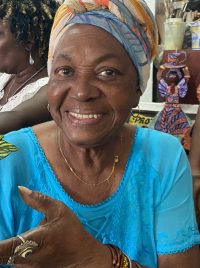
Paula Margarita Montalvo Jorrín is the Director of Proyecto La Muñeca Negra in Las Alturas de La Lisa, Havana, Cuba. She graduated from the Escuela de Arte San Alejandro in drawing, painting, and sculpture in 1971. She is a professor of Artes Plásticas. She appears in Esculturas en Cuba, Siglo XX (2005).
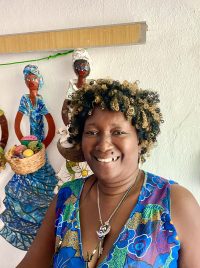
Loreto Maritza Arango Montalvo: I graduated as a Stomatologic Care Technician 1977- 2008. In 2014 I joined El Proyecto La Muñeca Negra, which allowed me to perfect my manual skills through workshops and courses (jewelry, cutting and sewing, saddlery, etc.), from the beginning acting as the General Coordinator. Another part of my formation were the training workshops, self-esteem, gender, women's entrepreneurship, popular and solidarity economy, feminist economy, and others that raised my personal improvement. Today I am the leader of two initiatives: Zapatería - Talabartería La Oportuna and Okikilo (traditional sweets). I belong to the Movement of Women in SPIRAL, Contours ArteCalle, Articulación Afro-feministas de Cuba, Taller de Transformación Integral de Barrio, and La Red Barrial Afrodescendiente. This articulation allows me to transform myself and to make transformations, to do and bring to my community work that is socially useful, emphasizing female empowerment and gender equity, popular education, feminist solidarity, and the fight against discrimination based on skin color.
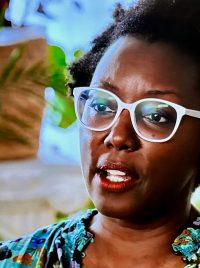
Yolanda Hester is a public historian, oral historian and co-founder of the consulting firm, "Frameworks and Narratives". She has been featured on PBS series: "Changing the American Doll Industry", and in the Netflix documentary, "Black Barbie". She has worked for many organizations, including the Los Angeles Department of Cultural Affairs, Local Projects, the Urban Civil Rights Museum, The Center for Oral History Research at UCLA, and the Forest History Society's digital exhibit - "Reclaiming Maxville: The Legacy of African Americans in A Lumber Town”. Hester is the Project Director of the "Arthur Ashe Oral History Project", an initiative of Arthur Ashe Legacy at UCLA.
- 1https://en.wikipedia.org/wiki/Academia_Nacional_de_Bellas_Artes_San_Alejandro
- 2https://www.bellasartes.co.cu/publicacion/escultura-en-cuba-siglo-xx
- 3https://cuba50.org/2021/10/19/casas-de-cultura-in-cuba-empowering-communities-to-access-consume-and-create-culture/
- 4https://www.jstor.org/stable/j.ctt1v2xskk.9?seq=1
